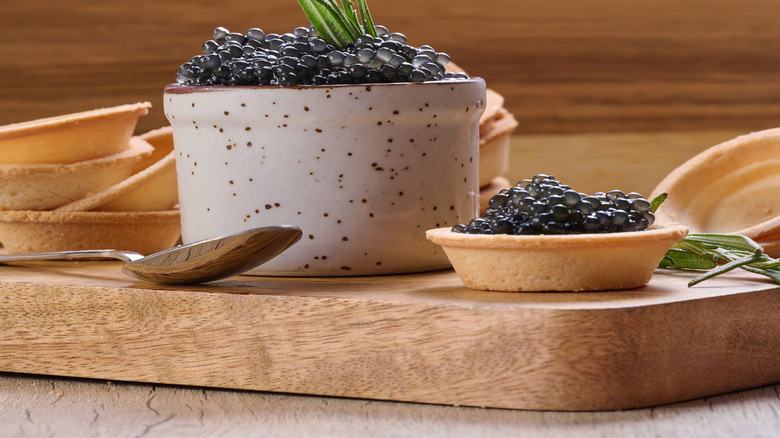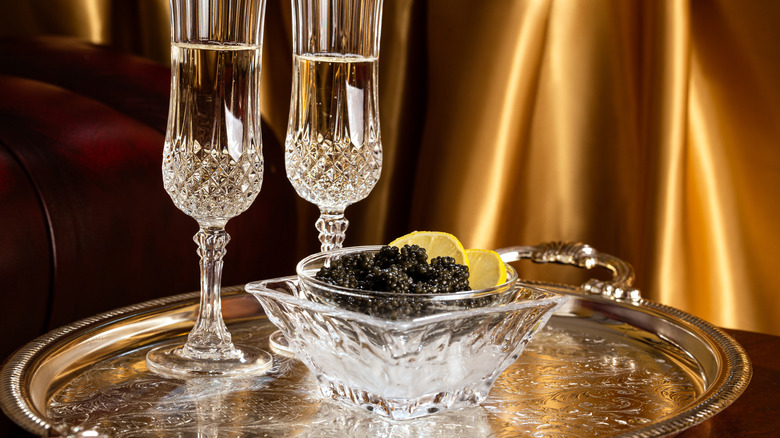Why You Should Eat Caviar Off Your Hand, According To Science
Caviar is a delicacy that enjoys polarized opinions. Some shrug it off as overrated and pretentious, while others feel it's worth the high cost. In either case, it's considered one of life's finer indulgences, which is a fascinating contrast given its history of being a humble fisherman's snack rather than an elite delicacy. Today, a purist will insist that you eat caviar off your hand, ideally between your index finger and thumb. It's a sacrosanct rule among those who appreciate good caviar, alongside serving it chilled and never pairing it with anything overpowering (for the record, potato chips make a surprisingly great food pairing). There is a deeper scientific explanation behind it. Caviar is naturally briny and delicate, so even the slightest change in its environment can alter its flavor or texture. Eating it off your hand ensures purity, as its interaction with the skin doesn't interfere with its taste. The back of the hand is preferred over the palm because it tends to be cleaner and less likely to hold lingering scents or flavors, resulting in a cleaner-tasting experience.
There's also a psychological element at play. When you eat with a spoon, especially a metal one, the brain tends to register the utensil as part of the flavor. This isn't the case with your skin. Beyond flavor, there's another important reason why caviar should be eaten off your hand. When placed on the skin, the natural warmth of the body gently brings the typically chilled roe to its ideal temperature, enhancing its buttery texture and nuanced taste and giving you that quintessential caviar sensation of the eggs popping in your mouth.
The utensil you serve your caviar in matters just as much
Before putting the caviar on your skin and indulging in it, you will, of course, need to serve it in a container. Even here, this basic choice is crucial because of the delicate nature of caviar. Since you don't want the flavor or composition of the roe to be compromised in any way, the first, and arguably most important, rule of thumb is to avoid metal containers. Metal of any kind reacts with the roe and can leave it tasting unpleasantly acidic. So, even serving caviar on a silver spoon will feel like you're licking an oceanic battery. The best way to go about it is to use raw or non-reactive materials. Your go-tos should be spoons or dishes made from bone, glass, wood, or even high-quality plastic. Glass is often the most practical choice as it's widely available, visually elegant, and perfect for serving caviar chilled. If you must resort to a metal bowl, place the caviar over a bed of crushed ice. That way, you can serve chilled caviar while minimizing contact with the metal.
Eating caviar is not just a meal, it's an experience (and an expensive one at that), so there's little room for error with this delicacy of conspicuous consumption. Yes, it can be finicky, but if you keep these two cardinal rules in mind, you'll be well on your way to enjoying it as intended.

